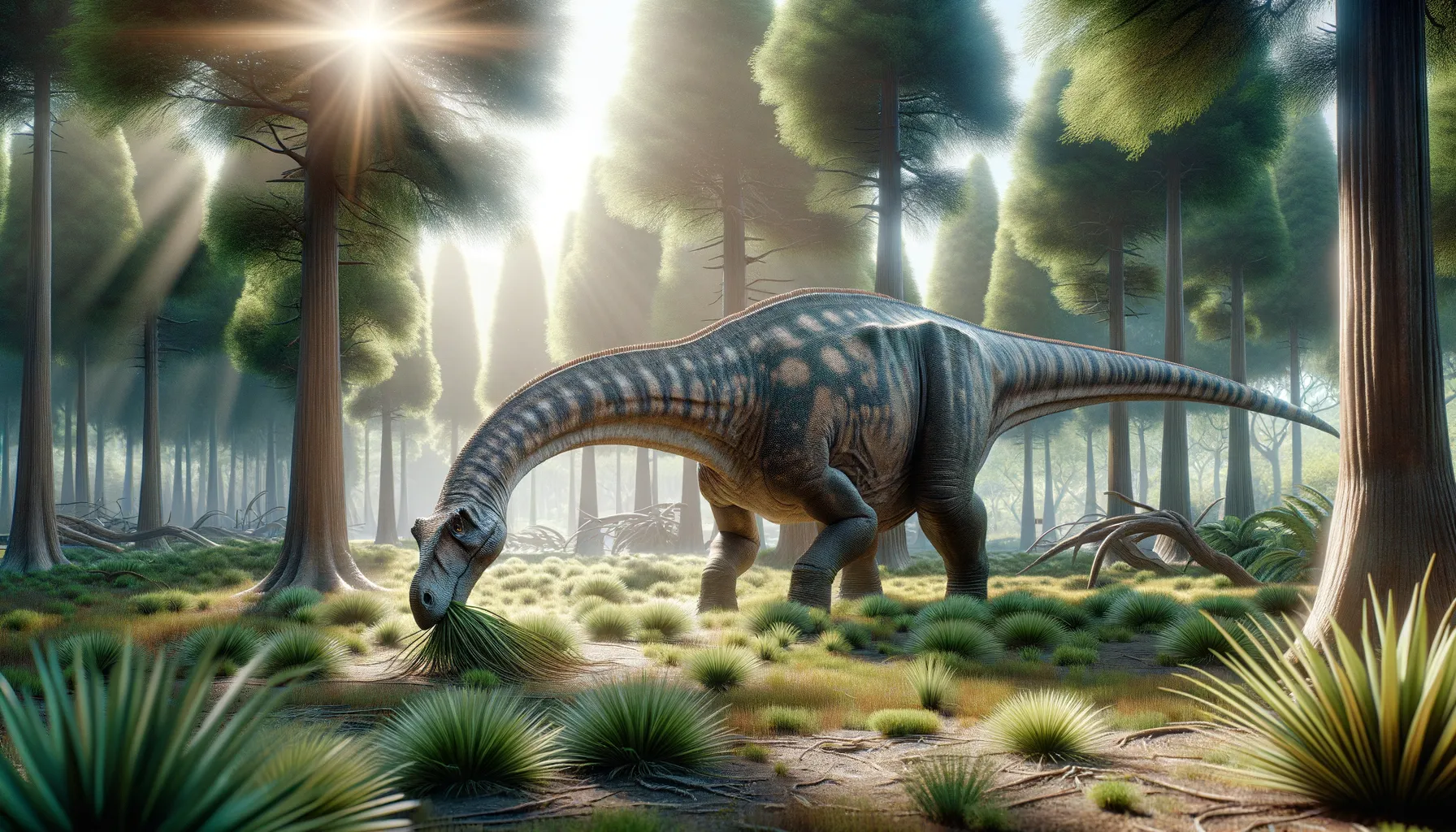
Shunosaurus
The tail-club gentle giant.
Period
Jurassic
Length
About 11 meters from head to tail.
Height
Approximately 5 meters at the shoulder.
Weight
Estimated around 3 tons in adulthood.
Shunosaurus was a medium-sized sauropod dinosaur that roamed the Earth during the Jurassic period. Known for its relatively short neck compared to other sauropods, Shunosaurus had a unique club at the end of its tail. It was a herbivore, feeding on the abundant plant life of its time, and likely moved in groups for protection against predators. Its fossils have provided significant insights into sauropod evolution.
Diet
Shunosaurus was a herbivore, mainly feeding on low-lying plants. Its teeth were adapted for stripping leaves rather than chewing, so it likely swallowed leaves whole. Its diet consisted of ferns, cycads, and other prehistoric plants.
Hunting
As a herbivore, Shunosaurus did not hunt but instead foraged for food. It would have spent a considerable portion of its day searching for and consuming plants. Defense mechanisms included its tail club, used to fend off predators.
Environmental challenges
Shunosaurus faced challenges such as fluctuating plant availability due to climatic changes. Large predators of the time posed a constant threat. Navigating its landscape required cautious movement to avoid injury or getting trapped in unstable ground. Its ability to migrate in search of food and safety was crucial for survival.
Speed
Relatively slow-moving due to its size.
Lifespan
Lived for several decades, typical of large sauropods.
First discovery
Discovered in 1977 in Sichuan Province, China.
Fun Facts
- Shunosaurus lived about 170 million years ago during the Middle Jurassic period.
- It was a relatively small sauropod, measuring about 9-11 meters (30-36 feet) in length.
- Shunosaurus had a unique feature among sauropods: a club-like tail, which might have been used for defense against predators.
- Its fossils were first discovered in the Sichuan Province of China in the 1970s.
- Unlike some of its massive sauropod relatives, Shunosaurus had a relatively short neck.
- Shunosaurus is believed to have been a herbivore, feeding on plants with peg-like teeth.
- Its name means 'Shu lizard,' named after Shu, an ancient Chinese state that existed in what is now Sichuan.
Growth and Development
Shunosaurus grew from small hatchlings to large adults over several decades. Its growth rate would have been influenced by food availability and environmental conditions. Juveniles were likely part of herds for protection, learning from adults how to forage and navigate their environment.
Habitat
Shunosaurus inhabited lush, verdant environments with plenty of vegetation. These areas would have been near water sources such as rivers to support its dietary needs. The landscape included forests and open plains, providing abundant plant life. Seasonal changes affected the landscape, requiring adaptability in habitat use.
Interaction with other species
Shunosaurus likely coexisted with a range of other dinosaur species. Herbivores of the period shared foraging grounds, which could lead to competition for resources. Predators, such as theropods, presented dangers, leading Shunosaurus to develop defensive social behaviors. Its group living likely facilitated effective resource sharing and predator defense.
Natural lifespan
Shunosaurus could live for several decades if not preyed upon or succumb to disease.
Reproduction
Reproduction in Shunosaurus was likely similar to other sauropods, with females laying clutches of eggs. Nesting sites would be chosen carefully to ensure the safety and heat needed for egg incubation. Parental care was minimal, with hatchlings left to fend for themselves and quickly adapt to herd life.
Social behaviour
Shunosaurus may have lived in herds, providing safety in numbers. Herding behavior would facilitate communication and coordination when traveling and foraging. Younger members of the group would learn from more experienced adults. Its herding nature also aided in the defense against predators, using the group’s numbers and tail clubs.
Fossil locations
The primary fossil discovery of Shunosaurus is in the Sichuan Province of China. These fossils have been found in sedimentary rock formations, providing rich insights into the Jurassic period. The region's geography has been conducive to the preservation of diverse dinosaur fossils. Fossil sites have been pivotal in understanding sauropod lifestyles and environments.
